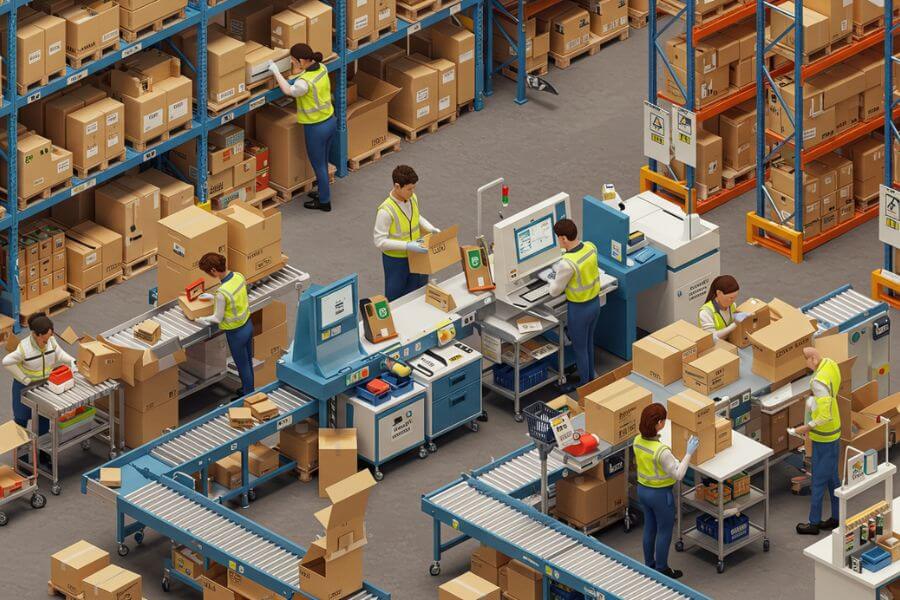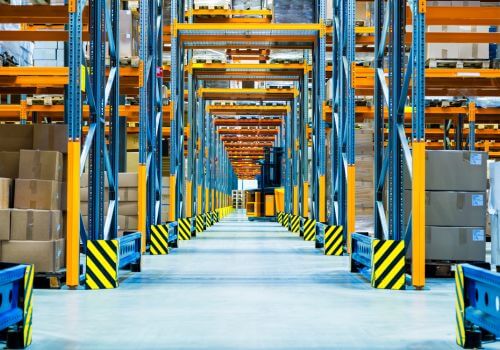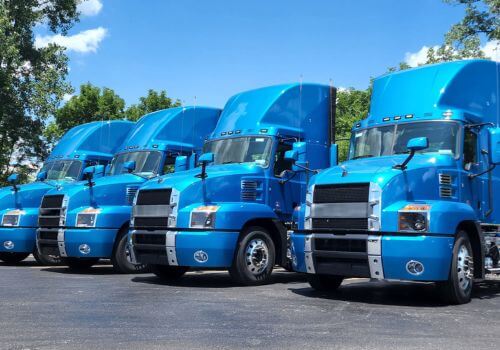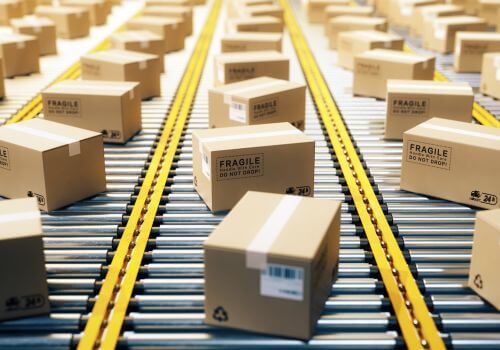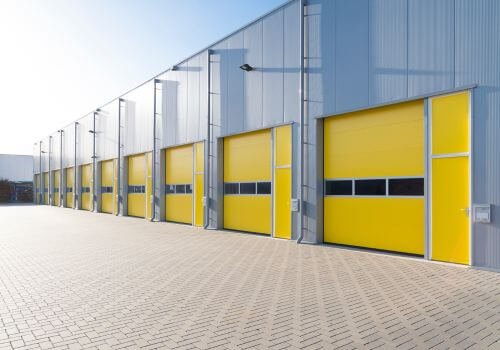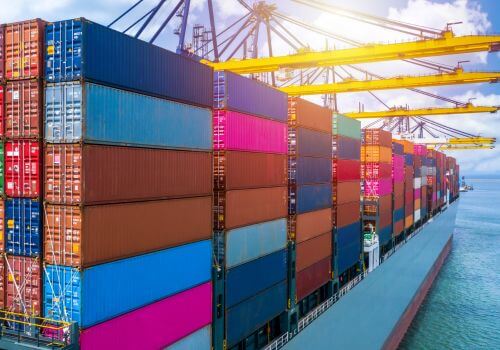Order fulfillment is the heart of any product-based business. Whether you’re running a small online shop or managing a growing e-commerce brand, understanding how to get products from your shelves to your customers’ doorsteps efficiently can make or break your reputation.
This guide will walk you through what order fulfillment is, why it matters, how it works, and how you can set up a smooth, scalable process—even if you’re just starting out.
What is order fulfillment?
Order fulfillment is the complete process from when a customer places an order to when they receive their product. It includes receiving inventory, storing products, picking and packing orders, shipping, and handling returns. In other words, it’s everything that happens after a customer clicks “buy now.”
Order fulfillment is a crucial part of logistics—the broader field of managing the flow of goods from suppliers to customers. Good fulfillment means happy customers, repeat business, and fewer headaches for you.
Why is order fulfillment important?
Order fulfillment isn’t just about getting products from point A to point B—it’s a key part of your business that directly affects your success. Here’s why it matters so much:
- Happy customers: When orders arrive quickly and correctly, customers are pleased. This leads to positive reviews, repeat purchases, and word-of-mouth recommendations.
- Building trust: Reliable fulfillment shows customers that your business is dependable. When people trust you to deliver on time, they’re more likely to buy from you again.
- Saving money: A smooth fulfillment process reduces mistakes, lost packages, and returns. This means you spend less fixing problems and more time growing your business.
- Room to grow: As your business expands, a good fulfillment system helps you handle more orders without feeling overwhelmed. It’s much easier to scale up when your process is organized and efficient.
In short, order fulfillment is the backbone of your business’s reputation and growth. When you get it right, everything else—from sales to customer loyalty—gets easier.
What does the order fulfillment process look like?
Order fulfillment might sound complicated, but it’s really just a series of simple steps that help you get products from your storage space to your customer’s hands. Let’s walk through each stage so you can see how it all fits together.
1. Getting your products in (receiving inventory)
Everything starts when you get new products from your suppliers or manufacturers. This is called “receiving inventory.” Here’s what you do:
- Check the delivery: Make sure you received the correct items and the right quantity.
- Inspect for damage: Look for any broken or damaged goods.
- Update your records: Add the new stock to your inventory list so you always know what you have available.
2. Storing your products (inventory storage)
Once you have your products, you need to store them in a way that makes them easy to find and pick later. Here’s how:
- Organize by category: Group similar items together on shelves or in bins.
- Label everything: Use clear labels or barcodes so you can quickly identify each product.
- Keep it tidy: A neat storage area helps you work faster and avoid mistakes.
3. Handling customer orders (order processing)
When a customer places an order, it’s time to get moving. The order processing step includes:
- Getting the order details: Your system receives the order and tells you what needs to be shipped.
- Picking the items: Find and collect the right products from your storage area.
- Packing the order: Carefully pack the items in a box or envelope, making sure they’re protected and ready for shipping.
4. Sending out the package (shipping)
Now that your order is packed, it’s time to get it on its way:
- Choose a shipping carrier: Decide which delivery service (like UPS, FedEx, or your local postal service) you’ll use.
- Print shipping labels: Attach a label with the customer’s address and tracking number.
- Hand off the package: Drop off the package with your chosen carrier or schedule a pickup.
5. Dealing with returns (returns processing)
Sometimes, customers need to send something back. Handling returns smoothly is important for good customer service:
- Have a clear return policy: Make sure customers know how to return items if needed.
- Check returned items: When you get a return, inspect it to see if it’s still in good condition.
- Restock or refund: Put good items back in your inventory and issue refunds as needed.
That’s it! By following these five steps—receiving, storing, processing, shipping, and handling returns—you’ll have a smooth order fulfillment process that keeps your customers happy and your business running efficiently.
What are the different types of order fulfillment?
When it comes to getting products to your customers, there are a few different ways you can handle order fulfillment. Each method has its own strengths and is best suited for different stages of your business.
In-house fulfillment
This is the most hands-on approach. You keep your inventory at home, in a storage unit, or at your own warehouse. When an order comes in, you pick, pack, and ship it yourself.
Why choose this?
It’s perfect for small businesses or those just starting out. You have full control over every step, from packing materials to personal touches like thank-you notes.
Things to consider:
It can get overwhelming as your orders grow. You’ll need space, time, and energy to keep up.
Third-party fulfillment (3PL)
With this option, you send your products to a company that specializes in storing, packing, and shipping orders for you. These companies are often called 3PLs (Third-Party Logistics providers).
Why choose this?
It saves you time and lets you focus on growing your business, not packing boxes. It’s great for businesses that are expanding or want to offer fast shipping without managing a warehouse.
Things to consider:
You’ll pay for their services, and you might have less control over the unboxing experience or custom packaging.
Dropshipping
Dropshipping is the most hands-off method. You don’t keep any products in stock. Instead, when a customer places an order, you buy the item from a supplier, who ships it directly to your customer.
Why choose this?
You don’t need to buy inventory upfront or worry about storage. It’s a low-risk way to start selling products online.
Things to consider:
You have very little control over shipping speed and product quality. Profit margins are usually lower, and customer service can be trickier if something goes wrong.
Hybrid fulfillment
Some businesses use a mix of the above methods. For example, you might fulfill best-selling items yourself but use a third-party provider for overflow or international orders.
Why choose this?
A hybrid approach gives you flexibility. You can balance control and convenience, and adapt as your business grows or changes.
Choosing the right fulfillment model for your business
Picking the best order fulfillment model for your business is an important decision, especially when you’re just starting out. The right choice can save you time, money, and a lot of stress. Let’s take a look at a few things you should consider.
- Order volume: High volumes may require 3PL or dropshipping.
- Product type: Fragile or custom items may be better handled in-house.
- Budget: Dropshipping has low upfront costs, but 3PLs may offer better rates at scale.
- Growth plans: If you plan to expand quickly, a scalable solution is key.
Start small and be flexible. You can always switch models as your business evolves.
Frequently asked questions about order fulfillment
Q1. How quickly should I ship customer orders?
A1. Customers today expect their orders to be shipped out fast—ideally within 1 to 2 business days after they place an order. The sooner you can get packages on their way, the happier your customers will be. If you can’t ship right away, let your customers know when they can expect their order to leave your facility.
Q2. What should I do if I run out of stock?
A2. Running out of stock happens to everyone at some point. If it does, update your online store right away so customers know an item is unavailable. If someone already placed an order, contact them quickly to explain the situation. Offer a refund, a replacement, or let them know when the item will be back in stock. Keeping customers informed builds trust.
Q3. How can I handle international shipping?
A3. Shipping to other countries can be a bit more complicated. You’ll need to check the shipping costs, delivery times, and any customs rules for each country you want to ship to. Start by offering international shipping to a few countries and learn the process. Make sure to fill out customs forms correctly and clearly communicate shipping times and any extra fees to your customers.
Q4. What’s the best way to keep shipping costs low?
A4. Shipping costs can add up, but there are ways to save. Use the right-sized boxes or mailers for your products—smaller packages usually cost less to ship. Compare rates from different shipping carriers and see if you can get a business discount. Offering free shipping for orders over a certain amount can also encourage customers to buy more, which helps cover your shipping expenses.
Q5. How do I make returns easy for my customers?
A5. A simple returns process makes customers feel confident buying from you. Create clear, easy-to-follow return instructions and include them in the package or on your website. If possible, provide a prepaid return label. Process refunds quickly once you receive the returned item. The easier you make returns, the more likely customers are to shop with you again.
In summary, Order Fulfillment in logistics is the process of receiving, processing, packing, and delivering customer orders to ensure the right products reach the right customers quickly and accurately.

